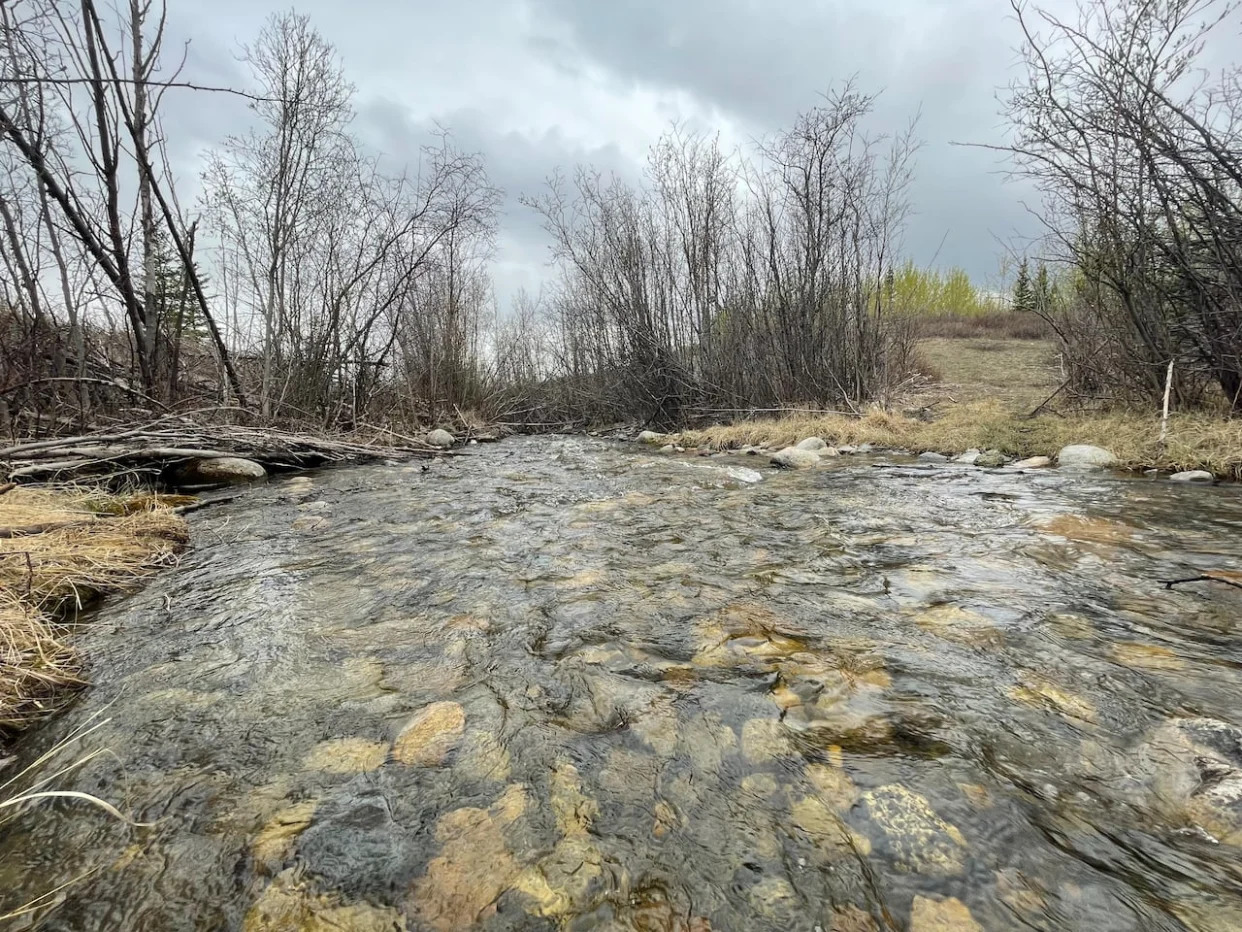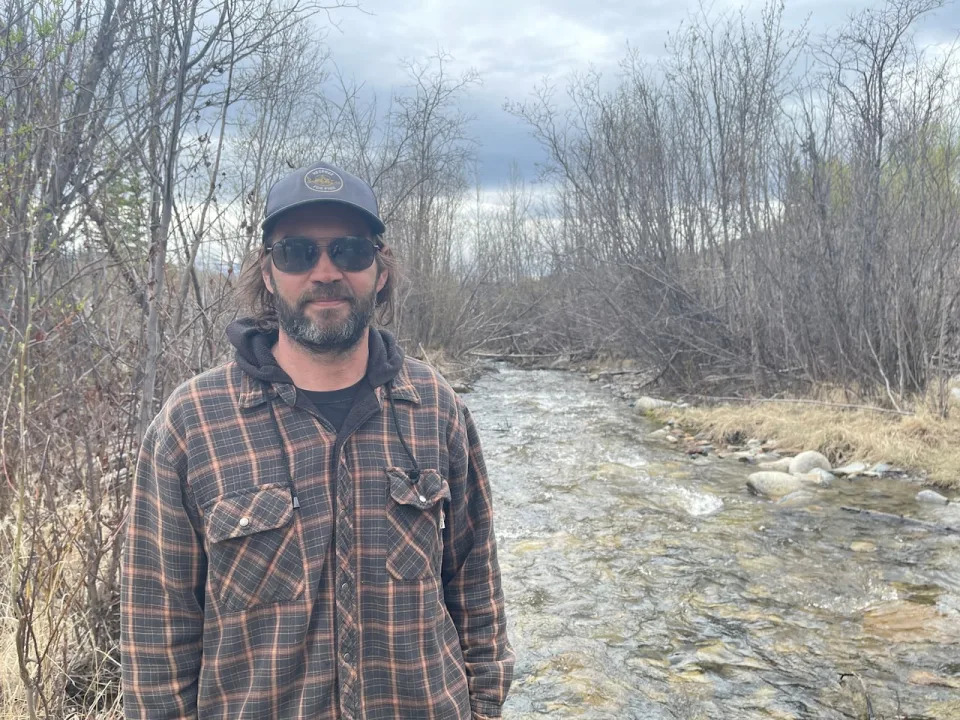CBC
Thu, May 23, 2024

Stony Creek, west of Whitehorse. The Yukon Environmental and Socio-economic Assessment Board has recommended a proposed placer mine not move ahead because impacts to water can't be mitigated. (Julien Gignac/CBC - image credit)
A creek west of Whitehorse many use for their drinking water could be spared from a proposed placer mine now that the Yukon Environmental and Socio-economic Assessment Board (YESAB) has recommended against the project.
"The project as proposed will have significant adverse effects to water quality and quantity for fish, fish habitat, human consumption and cultural water uses that cannot be mitigated," states an evaluation report posted on the board's website.
Hundreds of people rely on Stony Creek, a tributary of the Takhini River and near Mendenhall Landing, for their drinking water, according to YESAB. Some say they use the water because local wells are contaminated with uranium.
Shortly after the project was proposed, some began fighting against it, fearing irreparable impacts to water that is considered clean enough to drink straight from the creek.
An Alberta-based miner, Willy Driedger, wants to build a class four placer mine on 11 claims, each of which spans the creek. The proposal includes building several fords across the creek and a camp big enough for a crew of 12. It would also divert part of the creek.
The proposed mine would use up to 4,001 cubic metres of water per day, roughly equivalent to two Olympic-sized swimming pools.
Sean Smith, chief of the Kwanlin Dün First Nation, said the scale of the operation is enough to permanently impact the water, land, wildlife and people who have strong bonds to the place.
"Any clean water, either creek or spring, in my eyes should be protected to the utmost degree," he said. "The value of water and clean water that you can pretty much drink right out of the running creek, that's an amazing spot."
The territorial and federal governments, which will ultimately make the decision on whether the mine goes ahead, have yet to have their say. That happens next.
"We appreciate the importance of Stony Creek as a source of clean drinking water to nearby residents," said a spokesperson with the Yukon Department of Energy, Mines and Resources in an email. "We also recognize other concerns have been raised, such as the broader environmental impacts of the project and noise disturbances to nearby residents and trail users.
"The branch will be taking these concerns into account before making a decision."
Why did YESAB recommend what it did?
In large part, impacts to the water would be just too great and, according to YESAB, would likely continue for as long as there's mining in the area.
Many people could be affected, too, the report states, "across multiple generations."
"This is likely to result in a compromised ability for youth and future generations to pursue their cultural and contemporary activities," the report states.
"These effects cannot be mitigated."
YESAB also says the watershed has never seen a mining project of this magnitude before. There is a placer mine up on a bench overlooking the creek, but the board says the hand-operated mine is the only one that's active, and, as proposed and accepted by decision makers in 2015, no water would be withdrawn from the creek, nor would there be work in or near the watercourse.
Chinook salmon could also be greatly affected by the mine, YESAB states. It says for decades, juvenile salmon have been observed in the creek by First Nations citizens or researchers.
The creek appears to offer the type of habitat needed for the fish to grow — nurseries, of sorts, protected from predators like pike, raptors and other perils.
The population of Yukon River-bound chinook has been decimated, a fact that's prompted a concerted effort to help the species rebound by, among other things, implementing a fishing moratorium and work to restore spawning grounds.
Troy Friday, a Kwanlin Dün citizen and a Mendenhall resident, said if the territorial and federal governments were to accept the placer mine proposed at Stony Creek, that would contradict work to save the salmon.

Troy Friday, a citizen of the Kwanlin Dun First Nation
He says the Stony Creek watershed should be off limits to major development.
Troy Friday, a citizen of the Kwanlin Dün First Nation. He says the Stony Creek watershed should be off-limits to major development. (Julien Gignac/CBC)
Friday has made trips to the creek his whole life. Often, he brings his family down to pick raspberries and black currants and to appreciate the land.
Friday said a mine of the scale that's proposed has no place in the area.
"I don't think it should be considered in small little watersheds such as the Stony Creek watershed. There's salmon fry here. Our salmon are very challenged right now, and we need to give them the best chance possible for any hope of return. For any hope of my grandkids seeing salmon in this creek," he said.
"I'm still very cautious of this project, and until the final word is out, I'll still be advocating for salmon in our little creek here."
Troy Friday, a citizen of the Kwanlin Dün First Nation. He says the Stony Creek watershed should be off-limits to major development. (Julien Gignac/CBC)
Friday has made trips to the creek his whole life. Often, he brings his family down to pick raspberries and black currants and to appreciate the land.
Friday said a mine of the scale that's proposed has no place in the area.
"I don't think it should be considered in small little watersheds such as the Stony Creek watershed. There's salmon fry here. Our salmon are very challenged right now, and we need to give them the best chance possible for any hope of return. For any hope of my grandkids seeing salmon in this creek," he said.
"I'm still very cautious of this project, and until the final word is out, I'll still be advocating for salmon in our little creek here."

No comments:
Post a Comment